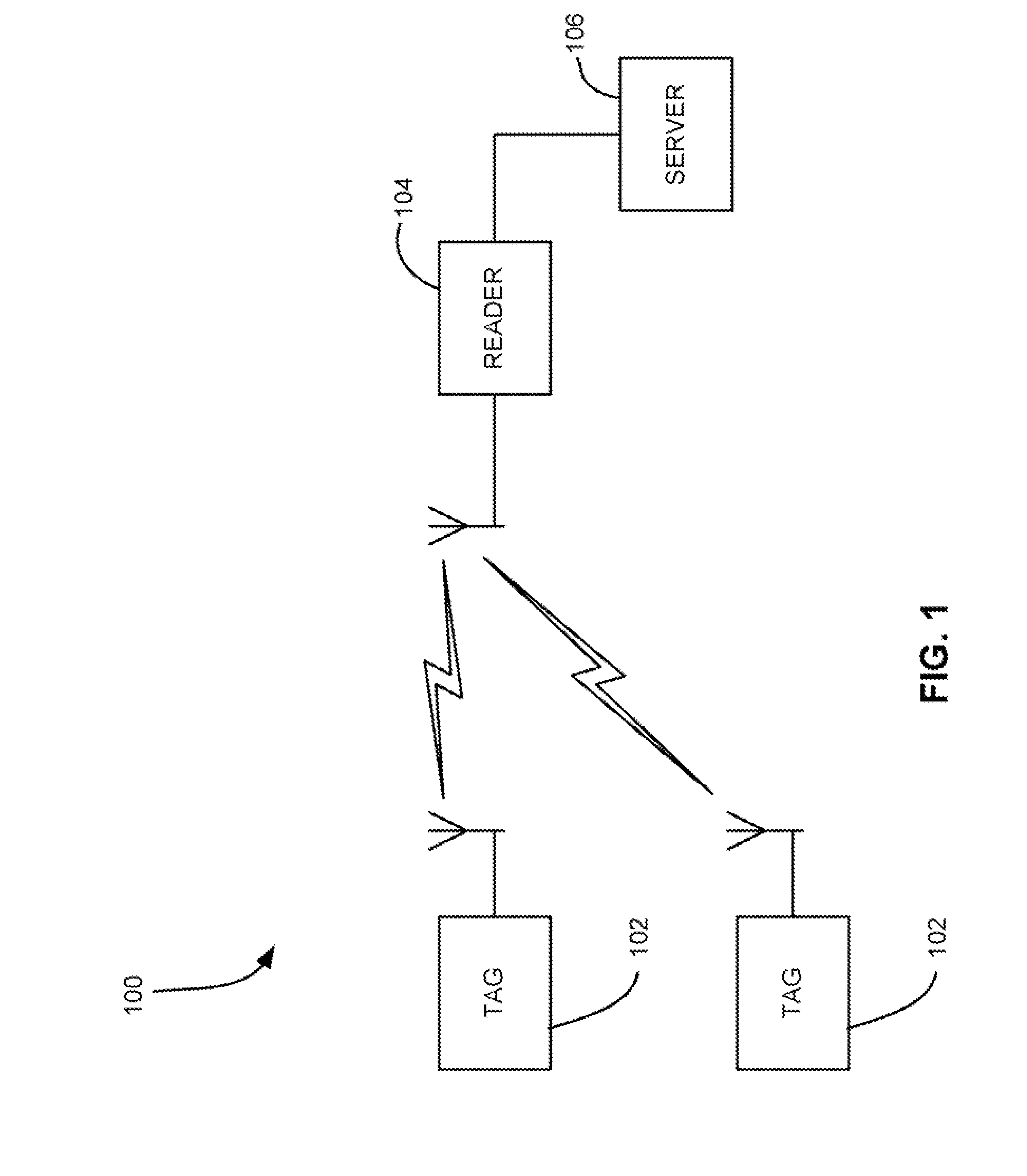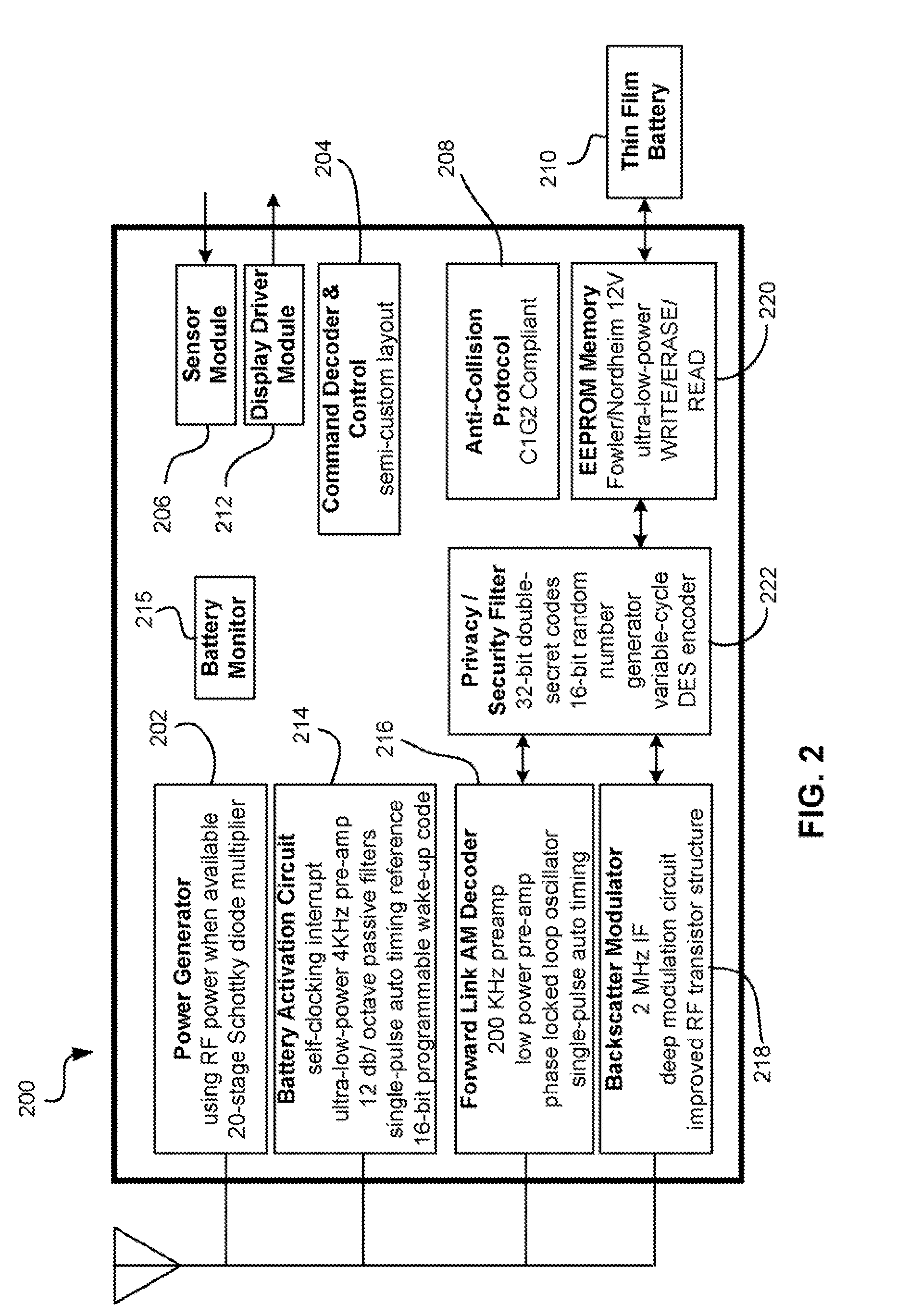RF systems and methods for providing visual, tactile, and electronic indicators of an alarm condition
a technology of radio frequency identification and alarm condition, applied in the field of radio frequency (rf) systems and methods, can solve problems such as temperature history profile, material deterioration, and user's need for an interrogator to be presen
- Summary
- Abstract
- Description
- Claims
- Application Information
AI Technical Summary
Benefits of technology
Problems solved by technology
Method used
Image
Examples
example
[0114]A master tag having a temperature sensor is placed on the outside of a pallet stacked with goods. Tags having temperature sensors are coupled to cases of items on the pallet. The master tag is programmed to set an alarm state if the ambient temperature exceeds a threshold. When temperature exceeds the threshold, the master tag alarm flag is set and an activate command is sent to the tags on the pallet. The tags wake up and begin monitoring a temperature profile of the object to which attached or its environment.
PUM
 Login to View More
Login to View More Abstract
Description
Claims
Application Information
 Login to View More
Login to View More - R&D
- Intellectual Property
- Life Sciences
- Materials
- Tech Scout
- Unparalleled Data Quality
- Higher Quality Content
- 60% Fewer Hallucinations
Browse by: Latest US Patents, China's latest patents, Technical Efficacy Thesaurus, Application Domain, Technology Topic, Popular Technical Reports.
© 2025 PatSnap. All rights reserved.Legal|Privacy policy|Modern Slavery Act Transparency Statement|Sitemap|About US| Contact US: help@patsnap.com



